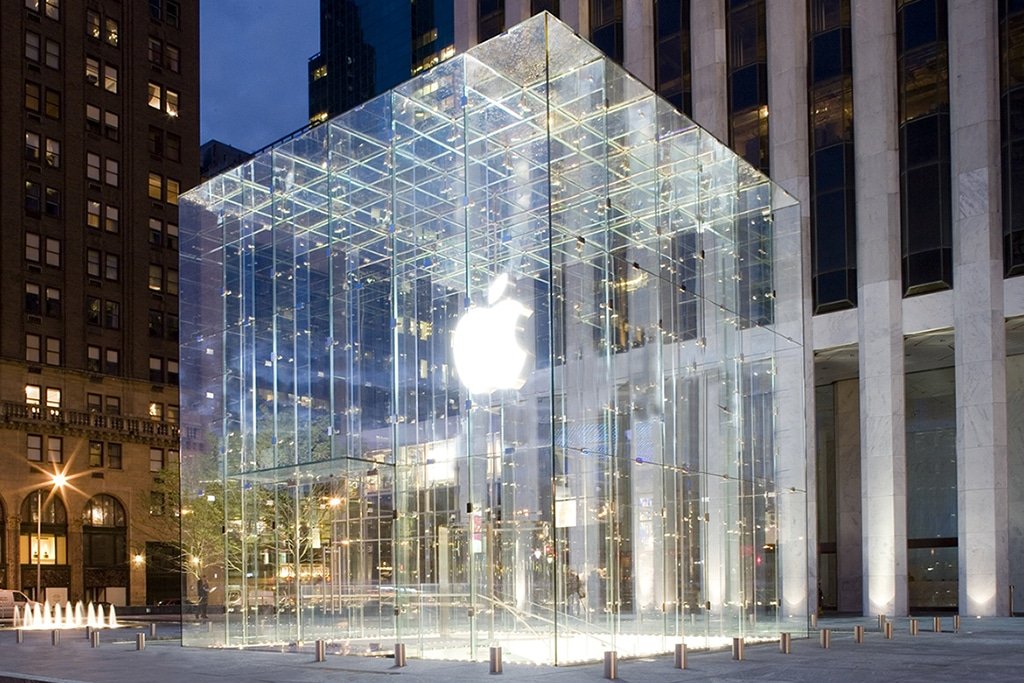Nobody can deny that Apple has had an incredible decade. Since the iPhone debuted in 2007, the company’s sales have jumped tenfold. The stock has soared over 700%, and up until last November, it was the world’s largest publicly traded company.
Two weeks ago, Apple issued a rare warning that shocked investors. For the first time since 2002, the company slashed its earnings forecast. The stock plunged 10% for its worst day in six years. This capped off a horrible few months in which Apple stock crashed about 35% from its November peak.
The truth is, Apple has trumpeted its services segment as a potential hedge against slowing iPhone sales, and analysts agree the company is facing a growing revolt against the transaction fees it charges for apps.
AB Bernstein’s analyst Toni Sacconaghi said:
“While the services segment grew 18 percent in the December quarter, we’ve now started to get investor questions worrying about whether the App Store will be the next shoe to drop. Certainly, the headlines in the last few months haven’t been encouraging. Netflix, Spotify, and Fortnite have all stopped / threatened to stop paying the so-called ‘Apple Tax’ of 15 to 30 percent on App Store revenues.”
We are all aware however that the iPhone is by far Apple’s most important product, accounting for nearly two-thirds of the company’s sales last year. But iPhone sales have flatlined since 2015, frustrating the millions of investors in one of the market’s most widely held stocks.
Apple CEO Tim Cook has a plan – bump up the iPhone’s price and sell customers services and other devices, like Apple Music and the Apple Watch, to go with them. Cook’s strategy has paid off. Apple set sales and profit records a year ago, and it eclipsed a $1 trillion market valuation in August.
Bear in mind, in 2010, you could buy a brand-new iPhone 4 for $199. In 2014, the newly released iPhone 6 cost $299 and today the cheapest model of the latest iPhone X costs $1,149.
It’s a 500% hike from what Apple charged eight years ago no matter that the technology gets cheaper over time.
However, recently there was a pretty good opportunity. Whilst stocks last, Apple is listing the iPhone SE for $249 on its clearance site.
Apple stopped selling the iPhone SE last September, and all new products feature home-button-less designs with larger screens.
If Apple sells out of what appears to be the last remaining stock of iPhone SE outside of India (where Apple is domestically producing phones just for that market), don’t fear.
Third party retailers continue to sell iPhone SE at quantity, often at even cheaper prices than what the Apple Clearance Store can offer.
You can get an iPhone SE from Amazon for $150 and eBay continues to list factory unlocked new iPhone SE models in various configurations under $200.
Be it as it may, gravity on the prices is starting to win. In November, the company rattled investors when it decided to stop breaking out iPhone sales — not exactly a sign of strength. On Wednesday, Apple (AAPL) warned that it would miss its sales target for the previous quarter, mainly because of weak iPhone demand in China.
Apple’s stock has fallen 36% since October 3. By last week, Apple had fallen behind Amazon (AMZN), Microsoft (MSFT) and Alphabet (GOOGL) in market value. Apple has lost $500 billion in market value over the past three months.
It’s not time to panic. Apple will probably remain a healthy company that can survive on inertia alone for years. Despite its revised outlook, Apple still expects to report $84 billion in quarterly sales. That’s a ton of money: That single quarter would be enough to rank No. 33 in last year’s Fortune 500.
Tim Cook blamed the lowered guidance on the slowing Chinese economy saying:
“While we anticipated some challenges in key emerging markets, we did not foresee the magnitude of the economic deceleration, particularly in Greater China. In fact, most of our revenue shortfall to our guidance, and over 100 percent of our year-over-year worldwide revenue decline, occurred in Greater China across iPhone, Mac and iPad.
Lower than anticipated iPhone revenue, primarily in Greater China, accounts for all of our revenue shortfall to our guidance and for much more than our entire year-over-year revenue decline. In fact, categories outside of iPhone combined to grow almost 19 percent year-over-year.”
For now, it seems that Apple is taking a page from the Netflix playbook. Netflix evolved again by taking ownership of some of its programs, thereby simplifying worldwide distribution deals. The company has taken that a step further in the past several years, finding showrunners and creators with impressive track records and locking them into multiyear deals to produce original programming for Netflix.
In a move that validates that strategy, Apple is taking a page from the streaming giant’s playbook, poaching a noted showrunner of its own.
